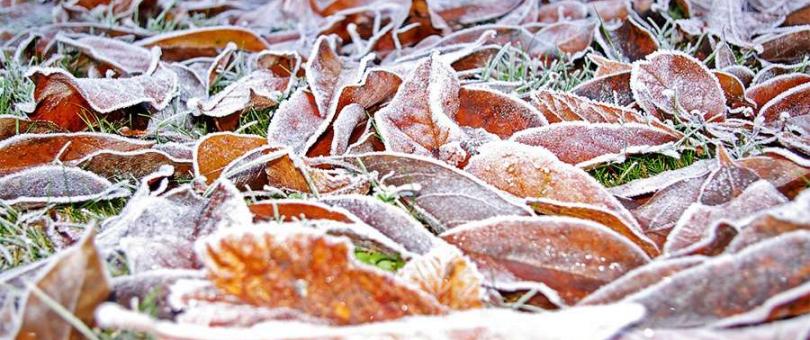Only the people living in the places with heavy snowfall will understand how difficult it is to maintain a lush and green lawn during winter. Are you facing the same problem? Don’t you want to know the secret of having a beautiful garden even during the cold winter season? We’re going to guide you through the process of protecting your lawn from snow and other winter hazards and keep it healthy and beautiful looking for the spring.
One of the most common problems that lawn owners face, due to extensive snow cover, is snow mold – a kind of fungal problem. The symptoms include – completely dead looking grass, lawn having irregular dead patches, a lawn covered with pink or gray cottony fungus. According to lawn care experts, snow mold attacks the lawn mostly when the lawn is covered by the snowy blanket for an extended period of time, and there is almost zero degree temperature in the area.
Pink snow mold is even worse than the gray one. It starts looking like gray mold only, but slowly destroy the blades and root system of the grass. On the other hand, gray snow mold is less harmful than the pink mold. It only damages the top of the grass blades, making the lawn look brown and patchy. The grass can recover on its own but can take almost all of the summer to do so.
ALSO READ: Beginner’s guide to lawn care in winter
So, what’s the solution?
The most efficient way is to generously over-sow your lawn and let it grow back to its glory. Make sure to use the best grass that is most suitable for your lawn. You can consult your lawn care professional if you don’t know which grass to use. Now, the following are some steps that can help you prevent the issue from recurring and ensure that you have a beautiful yard when spring rolls around next year.
Fertilizing the lawn in winter
Early winter or late fall is the best time to fertilize your lawn, having cool season grass. Before the mercury drops and freezing winds start to blow, fill your lawn thoroughly with fertilizers to replace all the nutrients lost from the soil during hot summer. When the weather turns cold, the fertilizers stay in their solid form, making sure that your lawn soil and grass roots keep getting nutrients all winter long. When spring comes, your lawn would be healthy, with lush and green grass because of all the nutrients it got from fertilizers underneath the snow.
Mowing the lawn
You should gradually lower the grass cutting height of your lawnmower with each cut, during the last month of summer. Cutting your grass shorter slowly and gradually will allow it to adjust the change and winter well, rather than to shock it completely by cutting it all off altogether.
Leaving your lawn grass too tall during the winter has many disadvantages. It can become prey to any burrowing animal, in search of a warm place. Snow mold can attack the tall grasses quickly as compared to the shorter ones. So, make sure that your lawn grass is as short as possible during the onset of winter.
Keeping the lawn clean
After you mow the lawn just before the winter, make sure that the lawn is clear of all the objects. It is very easy to leave and forget any item in the lawn during the long winter, especially because no one goes outside that often. Toys, logs, and even lawn furniture can be left outside during the first snowfall, which is very common but should not happen. Also, you should do an occasional lawn sweep every couple of weeks to make sure the lawn is clear.
The reason behind this is that during winter and snowfall, if an object is left out on the grass, it would be covered by snow and because of the combined weight of the subject matter and snow, it would create a big dead spot. As a result, in the spring, the grass in that patch would be thinner and pale than the rest of the lawn.
Avoiding excessive traffic
It’s easy to forget NOT to walk on the grass when it is brown and short. So, make sure that there isn’t much foot traffic on your lawn during winter. The grass is pretty strong and resilient, but it can be difficult for it to recover if a path becomes well worn.
To make sure that there’s less traffic in your lawn, keep your sidewalks cleared off the ice and snow. You and your guests won’t be tempted to walk on the lawn.
Do not allow any vehicle to be parked on your lawn. It is the fastest way to kill the healthy grass in your lawn and let different types of weed to grow in it.
Preparing before the winter
Honestly, there isn’t much lawn care that you can do during the cold months of winter. So, if you properly prepare your garden during the fall, it can survive the winter pretty well and would be okay for the warm spring days of the next year. Once you have done everything to protect your lawn from the winter, you can enjoy the winter comfortably with your family indoors, before another lawn care season begins in the spring again.


